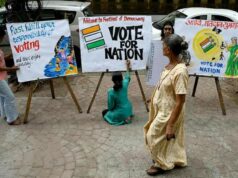London’s most authentic Indian food?
By Meera Dattani
This unassuming street in north London is the city’s original “Little India” – and nowhere else captures the original South Asian experience quite like it.
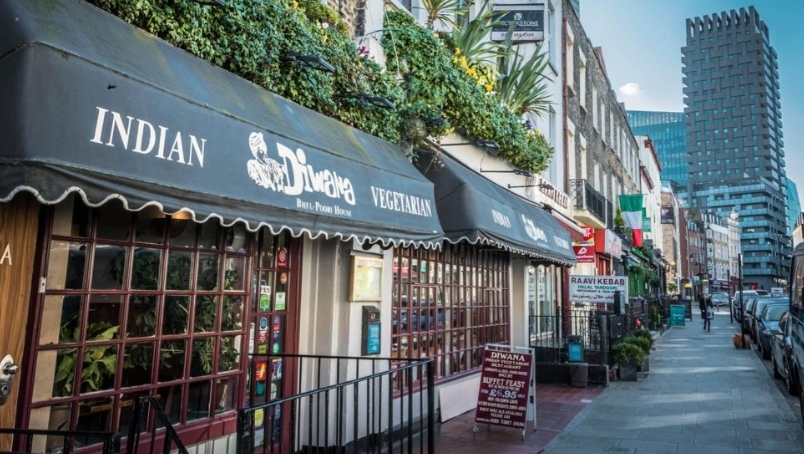
You could easily miss Drummond Street. Just west of Euston Station in central London, it’s an unassuming stretch of townhouses, basement flats, restaurants and shops, easily walked in a couple of minutes.
But look closer, and almost every restaurant and store is South Asian. Menus feature South Indian masala dosa (spiced pancakes), Mumbai-style street food and Lahori lamb kebabs; shop windows display South Asian sweets and savoury snacks; and there’s enough spices, pulses, pickles, pastes and flours to cater an Indian wedding.
Growing up in 1980s London, my family would come here looking for what the suburbs had yet to offer. Today, more than 30 years on and sat in Diwana Bhel Poori House, probably the UK’s oldest South Indian vegetarian restaurant and a Drummond Street favourite since 1971, it feels like little has changed, from the wood-panelled interior to the paintings on the wall. The food is still delicious – its chef for 30 years became the owner a decade ago and also runs Chutney’s restaurant, also on Drummond Street.
South Asians have lived in London since the mid-17th Century, when ships of the colonial East India Company docked in the capital. However, most came in the middle of the 20th Century; many from post-Partition India, Pakistan and Bangladesh to help rebuild post-war Britain, work in the National Health Service or as students of the diaspora. The 1960s and ’70s saw the arrival of East African Asians, mainly Punjabi or Gujarati, like my family, exiled from or leaving ex-British colonies of Kenya and Uganda. At a time of upheaval, change and occasional racism, Drummond Street was a literal taste of home to London’s vibrant South Asian community, thanks to a small-but-growing presence of family-run cafes and stores.
Yet despite decades of trade, Drummond Street flies under the radar. This little street between Regents Park and the British Library is nearer a railway station than a major attraction and eclipsed by its more famous counterpart, Brick Lane near Liverpool Street in the east of the city. There, far greater numbers of Bangladeshi restaurants flourished from the 1980s, and its better-known “Banglatown” tag a nod to its long-standing resident community. But while Brick Lane got trendy, as clubs, shops and bars, including those inside the ever-expanding Truman Brewery, attracted Londoners and tourists alike, Drummond Street, despite its central location, has more or less stayed as it was – which is why so many people come back to it.
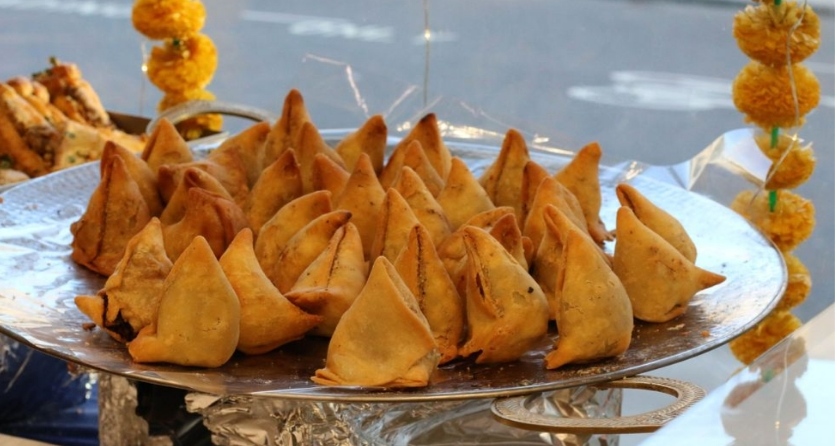
South Asians flock to Drummond Street for the authentic and freshly made food
Today, practically every town in the UK is home to a South Asian restaurant or takeaway, and versions of Drummond Street did evolve in London’s suburbs: Southall in west London; Wembley’s Ealing Road in the north-west; and east London’s Green Street, with grocery shops, sari stores and dhaba (roadside restaurant)-style cafes, But Drummond Street pre-dates them all. Nowhere else captures the original South Asian experience in the heart of the capital.
Outside the still-bright-green exterior of Ravi Shankar restaurant, a favourite since 1982, manager Israb Miah recalls the queues from the early days. “People came from Wembley, Southall, even Birmingham and Manchester, before those areas got their own South Asian restaurants,” he told me.
Nowhere else captures the original South Asian experience in the heart of the capital
And they still come, he said. “Many are nostalgic, perhaps former students, looking for ‘their old Drummond’.” But they also come for freshly made chaat (street food) dishes, inspired by roadside stalls and food carts of Mumbai’s Chowpatty and Juhu beaches: dishes like crunchy bhel poori, puffed rice with vegetables, yogurt and tangy tamarind sauce; or aloo chaat, fried potatoes with raw onion, chutney, lime juice and masala (spices). They come for the dosa, filled South Indian pancakes of fermented rice and lentil batter, served with chutneys; and sambar, lentil and tamarind stew. And for the legendary buffets and thalis (Hindi for “plate”) to feast on bowls of daals (lentils), pickles, vegetables and rice, served with flatbreads like chapatis.
What’s the key to Drummond Street’s enduring appeal? Food writer, chef and author Anjula Devi, a Drummond fan and a spice expert, puts it down to the prep and the freshness. “Good South Asian food is layered, with spices going in at a certain stage,” she explained. “For example, you add the mustard seeds first, so they soften and mellow, then, for example, cumin and fennel seeds. These flavours bounce around in your mouth – you taste that at places like Diwana.”
It’s also the relaxed atmosphere. “I feel they want to look after me, like I’ve popped into an aunty’s house,” Devi said. “And you get the pickles, sides and chutneys you’d get at home.” That’s a common opinion. Whether at Drummond Villa Restaurant, Masala King, Chutney’s, Euston Spice, Taste of India, Shah Tandoori and others, these are family-run places, often with long-standing staff. Many have lived here for decades and gone to school together. It’s not unusual to see them chatting in each other’s doorways.
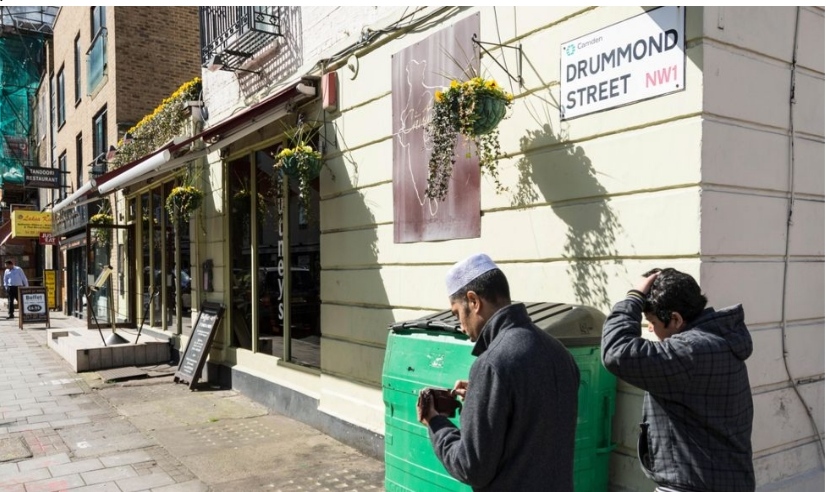
Drummond Street flies under the radar compared to trendier Brick Lane
That’s the story at Raavi Kebab, where I met owner Tehreem Riaz. “We lived above the shop as council tenants before my parents got the lease in 1976,” she told me. “Mum started cooking Lahori Punjabi food. That’s what people love.” Their chef Khalid Jamil arrived from Kashmir in 1985, starting as a 16-year-old kitchen hand. He’s now been cooking Pakistani specialities for 35 years.
As Riaz and I chatted, a customer overheard the conversation and chimed in that he’s been getting his kebab fix here since arriving in London from Pakistan in the 1990s to study law. “This is the food from home,” said barrister Saamir Mahmud. “I always come for Khalid’s slow-cooked nihari lamb. It takes me back to my childhood.”
This ever-present connection between food and home is Drummond Street’s heartbeat. Across the road is Ambala, the street’s oldest, still-running Asian business since 1965 and quasi-legendary in South Asian circles for making the sweets and savouries that are served at everything from lavish weddings to family breakfasts. It’s the fanciest of the street’s shops, with sofa seating, shiny counters and shelves of Ambala-branded pickles and sauces.
A few doors along at Gupta’s, founded by Ricky and Rakhee Gupta in 1979, trays of samosa (baked, filled pastries), kachori (deep-fried lentil balls), pakora (vegetable fritters) and glistening orange jalebi (sugar-syrup coated sweets) lure you inside, where you can also sip masala tea or try their creamy, homemade kulfi ice cream.
Drummond Street isn’t exclusively South Asian. There’s the fringe venue Camden People’s Theatre, a Chinese restaurant-supermarket, an ice-cream parlour and the Grade II-listed Crown and Anchor pub. Everyday businesses such as hairdressers, pharmacies and convenience stores are reminders this is a living, lived-in neighbourhood.
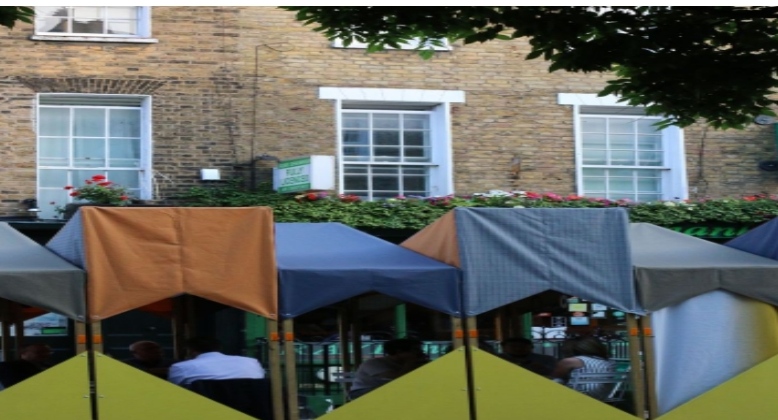
Drummond Streatery is a new al fresco dining set-up that hopes to inject new life into the area
Drummond Street also pioneered a global food empire. In the 1950s, the Pathak family started selling samosas from their Kentish Town home a few miles away, helped by 10-year-old son Kirit. In 1958, where the Indian Spice Shop stands today, Kirit’s father L G Pathak opened Pathak’s grocery store – many people, including my father, recollect ordering Indian treats to be delivered to boarding schools or lodgings. This unassuming shop would be the forerunner to the iconic food brand Patak’s (the ‘h’ removed for pronunciation reasons) founded by Kirit Pathak, tragically killed in a car crash in 2021, and his wife Meena. A household name, their jars of curry sauces, lime pickles and mango chutneys line supermarket shelves across the UK and beyond.
Today brings new challenges for the area. Drummond Street, like many, has suffered in the pandemic, but construction work by HS2, who are managing the UK’s new high speed rail network with Euston as its terminus, threatens footfall from the station, street access and parking. The street has received a revitalisation grant in recognition of its importance, resulting in the recently launched Drummond Streatery, where colourful street-side cabins allow for al fresco dining; and an August street party with DJs, dancing, street stalls and taster menus.
Other plans include renovating shop fronts, street food festivals, themed nights and festoon lighting to encourage a night-time economy. Planters, created by Global Generation, a local environmental charity connecting young people to nature in urban environments, are also in place.
Words like regeneration and revitalisation are often code for gentrification, but “this isn’t about creating a more modern environment; it’s about celebrating what’s here,” Georgie Street, Euston Town’s head of projects, told me as we shared a spinach and cheese dosa and a pile of mithai (sweets) outside Ravi Shankar restaurant.
I think for many people, Drummond Street really is the taste of home
Streets with a story are the soul of a city. Some traders remain worried about business, but there is a sense of optimism, determination and unity. For Riaz, seeing Mahmud still enjoying his nihari lamb, 30 years after he first came as a London law student, is reassuring. “I think for many people, Drummond Street really is the taste of home,” she said. “Food has so much history and brings back so many memories. I feel we’re so blessed to have such a special place in people’s hearts.”
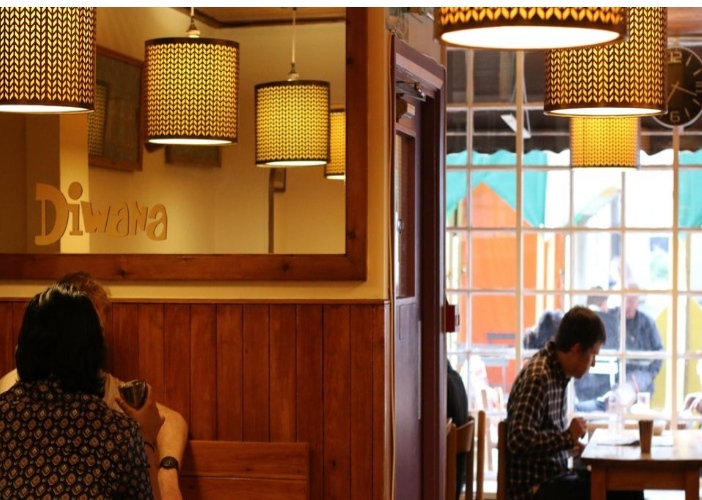
Serving up vegetarian Indian food since 1971, Diwana has long been a Drummond Street favourite

